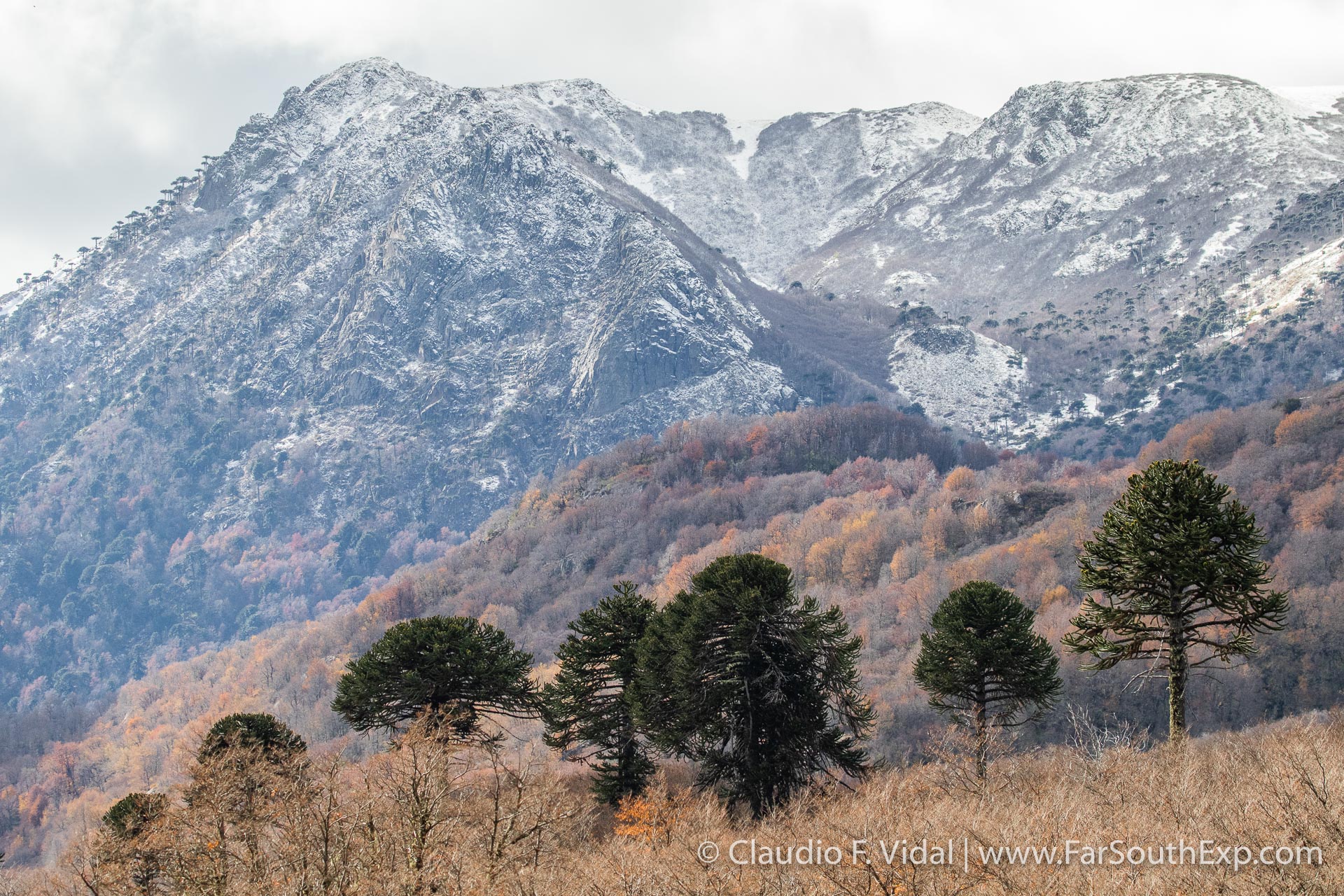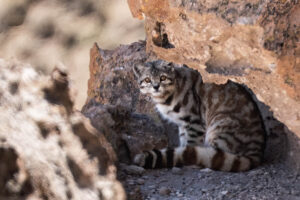Araucaria araucana is an iconic tree species of northern Patagonia, naming not just the genus but the entire family Araucariaceae, a very peculiar ensemble of fascinating trees. The solemn Araucaria or Monkey-puzzle, is revered by the Mapuche people – or Araucanos – from ancient times, and still fascinates nature enthusiasts from all over the world. Its intriguing shape, ancient origin and endurance to the harsh weather of the Andes of southern Chile and Argentina, makes it a true icon of this beautiful and still pristine region of the world.


The Araucaria is one of the 19 extant species of the genus (41 species in the family) and together with Araucaria angustifolia (from southern Brazil and north-east Argentina) are the only ones present in the American continent; most of the Araucaria trees – and related species – are confined to remote and distant woodlands of New Zealand, Australia, Norfolk Island and New Guinea. This is truly an ancient lineage of trees originating during the Middle Jurassic some 174 to 163 million years ago, being another living testimony of the long-gone Gondwanaland super-continent.
This large evergreen and dioecious tree can live over 1,000 years and can grow up to 40m (130+ feet); its thick and straight trunk can be as wide as 2m (6,5 feet) in diameter. Male and female cones can be easily differentiated by shape and size and helpful in determining the sex of individual trees. The globose cones of female trees are the larger and after being pollinated, they mature for nearly two years to eventually disintegrate, producing up to 300 seed nuts (known as piñones or ngëlliu).
Araucaria araucana is an endemic tree of the Temperate woodlands of South America, growing under very specific habitat conditions of latitude, altitude, soil, and temperature. Large stands of Araucaria, comprising a surface over 430,000 hectares (+1 million acres) grow along both slopes of the Andes of Chile and Argentina, between 37°30’S and 39°40′ S, at altitudes ranging between 1,000 and 1,600 meters (3,280-5,250 ft.). Araucarias develop very well over andesitic volcanic rocks, quaternary basalts and granite intrusions covered by layers of volcanic ash and scoria. They can tolerate an extreme range of temperature (-20°C to 30°C / -4°F to 86°F).
It’s really fortunate that large areas where the Araucaria trees grow are protected national parks and nature reserves, both in Chile and Argentina, ensuring its effective conservation. The stunning Conguillio National Park is also a UNESCO World Biosphere Reserve, protecting large stands of Araucaria interspersed on this dramatic volcanic setting, with Llaima Volcano as its omnipresent feature.
I recently did an autumn photographic trip to Conguillio to witness myself the dramatic foliage color changes; Araucaria as we all know is a perennial species but the related community of temperate trees, mostly Nothofagus offer the most stunning spectacle during the second half of May, the peak of fall in the Southern Hemisphere. Species such as Raulí (Nothofagus alpina), Lenga (Nothofagus pumilio) and Ñirre (Nothofagus antarctica) truly sparks the miracle, in a regional fall event comprising the whole of Patagonia. The mighty Araucarias are still the main fascinating subjects to document on this unique and inspiring foliage-changing scene.







Leave a Reply
Your email is safe with us.